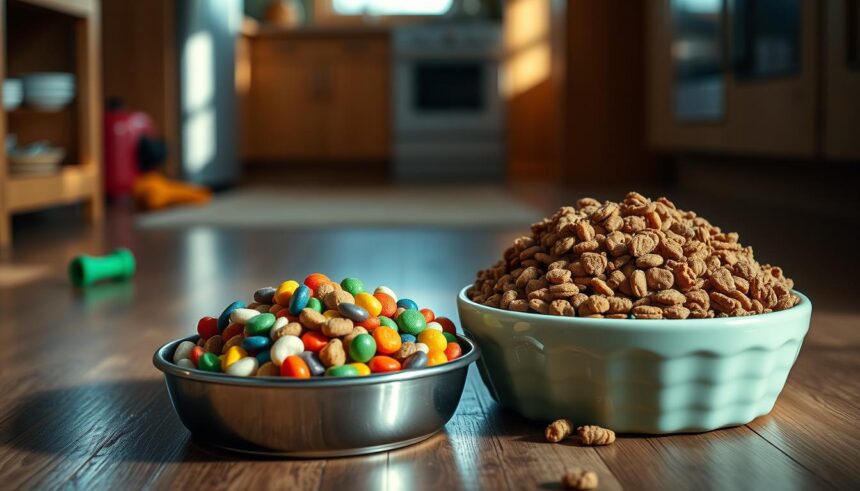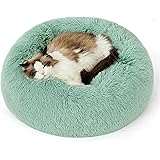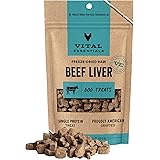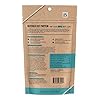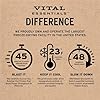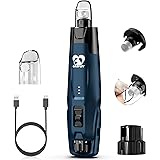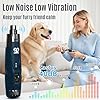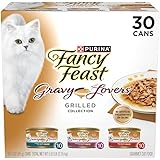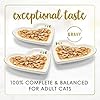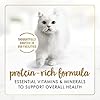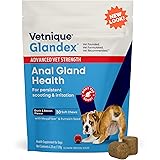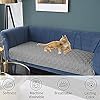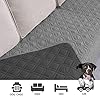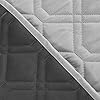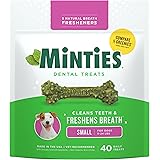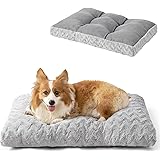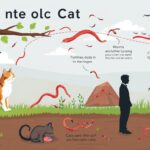As a pet owner, you might wonder if cats can eat dog food. With more people learning about pet nutrition, it’s key to know what each pet needs. The American Kennel Club says dogs and cats have different diets. Cats need more protein than dogs, so it’s important to choose the right food for them.
For more info on pet nutrition, check out cat and dog food resources.
It’s important to know the differences between cat and dog food for your pet’s health. Dry foods have a lot of carbs, and raw diets need the right meat ratio. Wet foods, with 80-95% meat, are good for cats. So, can cats eat dog food, and what are the risks and benefits?
Key Takeaways
- Pets on a balanced diet have a 20% lower risk of health problems.
- Cats need more protein than dogs because they are obligate carnivores.
- Strategies to keep dogs from eating cat food are important.
- About 85% of pet nutritionists say to stick to the right diet for each species.
- Dogs need about 30% protein, while cats need 40%.
- Dogs eating cat food can gain weight because cat food has more calories.
Understanding the Nutritional Needs of Cats
Cats have special feline dietary needs to stay healthy. They need a lot of protein, some fat, and not much carbs. Their cat nutrition is different from dogs. It’s key to feed them food made just for them.
The Pet Food Institute says cats need certain nutrients. These include taurine, arachidonic acid, and vitamins. A balanced diet is vital to keep them healthy.
Some important things for cat owners to remember are:
- High-quality animal protein as the main ingredient
- Moisture content to keep them hydrated
- Essential nutrients like taurine and arachidonic acid
By knowing and meeting cats’ nutritional needs, owners can help them live happy, healthy lives. Next, we’ll explore the essential nutrients cats need and how they differ from dog food.
Can Cats Eat Dog Food Occasionally?
It might seem like a good idea to give your cat some dog food. But, cats and dogs have different dietary needs. Cats need a lot of protein and fat, while dogs can eat a variety of foods. Giving your cat dog food sometimes might not hurt them right away. But, it could cause problems with their nutrition and health over time.
Cats need taurine, an amino acid that dog food often lacks. Dog food also has more carbs, which can make cats gain weight and even get diabetes. It’s important to keep your cat safe and give them food made just for them.
Here are some main differences between cat and dog food:
- Higher protein content in cat food
- Lower carbohydrate content in cat food
- Presence of taurine and other essential nutrients in cat food
If you’re thinking about giving your cat dog food, think about the risks and benefits. A little bit of dog food now and then is probably okay. But eating it regularly can cause health problems. It’s better to give your cat a good, balanced diet that’s right for them, and keep them safe.
Always talk to your vet before changing your cat’s diet. They can give you advice that’s just right for your cat’s needs and keep them safe.
| Nutrient | Cat Food | Dog Food |
|---|---|---|
| Protein | 30-50% | 18-26% |
| Carbohydrates | Lower | Higher |
| Taurine | Present | Often lacking |
Why Dog Food Is Not Ideal for Cats
When it comes to what cats eat, cat food vs dog food is a big deal. Cats need certain nutrients that dogs don’t, and dog food can be harmful. Dog food often lacks important nutrients like arachidonic acid and taurine.
Cats need a lot of protein in their diet, with at least 30% of their calories coming from it. Dog food, however, has less protein and more carbs. This can cause stomach problems and other health issues in cats. Here’s a table showing the main nutritional differences between cats and dogs:
| Nutrient | Cat Requirement | Dog Requirement |
|---|---|---|
| Protein | 30-45% | 18-25% |
| Taurine | Essential | Not required |
| Arachidonic Acid | Essential | Not required |
Feeding cats dog food can cause many health problems. These include malnutrition, stomach issues, and a higher risk of obesity and diabetes. It’s crucial to give cats a diet that’s balanced and meets their specific needs, not dog food.
Signs Your Cat Has Eaten Dog Food
Cats need special nutrients that dog food doesn’t provide. If your cat eats dog food, they might show signs like vomiting, diarrhea, or constipation. These signs can mean their stomach is upset, which could get worse if not treated.
Common Symptoms of Digestive Distress
Signs of upset stomach in cats include not wanting to eat, losing weight, and feeling pain in the belly. If you see these signs, get your cat to the vet right away. A vet can find out what’s wrong and tell you how to fix it.
Behavioral Changes to Watch For
Cats eating dog food might also act differently. They might seem really tired or restless. These changes can be small, but they mean your cat is not feeling well. If your cat acts strangely, watch them closely and see a vet if needed.
To stop dog food from harming your cat, keep it away from them. Feed your dog in a different room or use a baby gate. This way, you can keep your cat safe and healthy.
- Monitor your cat’s food intake and overall health
- Keep dog food out of your cat’s reach
- Seek veterinary care if you notice any unusual symptoms or behavioral changes
| Symptom | Description |
|---|---|
| Vomiting | Forceful expulsion of food from the mouth |
| Diarrhea | Loose, watery stools |
| Constipation | Infrequent or difficult bowel movements |
Risks of Feeding Dog Food to Cats
Feeding dog food to cats can be harmful. Cats need a diet rich in protein and fat from animal sources. Dog food often lacks these, leading to obesity and diabetes in cats.
Dog food also lacks essential nutrients like taurine and vitamin A. Cats need these for good health. Eating dog food can cause serious health problems, including vision issues and liver disease. It can also lead to dehydration and urinary tract problems.
- Obesity and diabetes from too many carbs
- Lack of nutrients like taurine and arachidonic acid
- Digestive and liver problems
- Dehydration and urinary tract issues
To keep cats healthy, they need a balanced diet. This can be high-quality cat food or advice from a vet. Avoiding dog food helps your cat stay healthy and happy.
| Nutrient | Cat Food | Dog Food |
|---|---|---|
| Protein | 30-40% | 15-20% |
| Fat | 20-30% | 8-20% |
| Carbohydrates | 1-5% | 30-60% |
Alternatives to Dog Food for Cats
It’s important to find the right food for cats. They need a diet rich in protein, fat, and taurine. Dog food often lacks these, so we must look for cat-specific options.
A balanced diet is key for a cat’s health. There are many cat food alternatives out there. It’s important to pick one that meets their nutritional needs.
Recommended Over-the-Counter Cat Foods
Look for cat foods that are high in protein and low in carbs. They should also be rich in taurine. Make sure the ingredients are good and avoid fillers and by-products.
Homemade Cat Food Recipes
Homemade cat food is another option. Recipes often use fresh ingredients like chicken, salmon, and sweet potatoes. But, always check with a vet before changing your cat’s diet.
- Use fresh, high-quality ingredients
- Stay away from fillers and by-products
- Make sure the diet is balanced and complete
- Consult with a vet to meet nutritional needs
| Ingredient | Benefits |
|---|---|
| Chicken | High-quality protein source |
| Salmon | Rich in omega-3 fatty acids |
| Sweet potatoes | Complex carbohydrate source |
By considering these points and exploring different options, you can give your cat a healthy diet. This diet will meet their unique needs and support their overall health.
Transitioning a Cat’s Diet Safely
Changing your cat’s diet needs to be done carefully to prevent digestive issues. A cat diet transition should take 1 to 2 weeks. This allows your cat’s digestive system to get used to the new food.
This slow change is key for your cat’s feline nutrition and health. Start by mixing a bit of the new food with their old food. Then, slowly add more of the new food over time.
Here are some steps for a safe transition:
- Days 1-2: 75% old food and 25% new food
- Days 3-4: 50% old food and 50% new food
- Days 5-6: 25% old food and 75% new food
- Day 7: 100% new food
Keep an eye on your cat’s health during the transition. Adjust the pace if needed. With patience and planning, you can make the cat diet transition smooth. This will keep your cat happy and healthy.
Expert Opinions on Cats Eating Dog Food
Experts say a balanced diet is key for cats. Veterinarians note that cats need more protein than dogs do. Pet nutritionists also point out that dog food often lacks important nutrients like arachidonic acid and taurine.
Veterinarian Insights on Feline Nutrition
Vets say cats must eat at least 41% protein. Dog food might not provide enough, which can harm their health. Many pet cats in the U.S. are overweight, and eating dog food can make it worse.
Opinions from Pet Nutritionists
Pet nutritionists advise talking to cat experts for the right diet. They suggest watching your cat’s health and changing their food if needed. Here’s a table showing the main differences between cat and dog food:
| Nutrient | Cat Food | Dog Food |
|---|---|---|
| Protein | 40-45% | 18% |
| Arachidonic Acid | Essential | Not required |
| Taurine | Crucial for heart health | Not essential |
By talking to vets and nutritionists, you can make sure your cat gets the right food. This is important for their health and nutrition.
Pet Owner Experiences
Many cat owners have shared their stories about feeding their cats dog food. They stress the importance of feline nutrition for pet health. These cat owner experiences teach us the value of a balanced diet for cats.
Reports show that dog food can cause protein deficiency in cats. Cats need more protein than dogs. This is key for their feline nutrition and pet health. For more on cat food risks and benefits, check out this resource.
Cat and dog food differ in taurine, arachidonic acid, and vitamin A levels. Cats need these, but dogs can make them. Knowing this helps cat owners keep their pets healthy.
By focusing on feline nutrition, cat owners can avoid health problems. They should know the risks of dog food and give cats a balanced diet. This ensures their pets stay healthy.
| Nutrient | Cat Requirements | Dog Requirements |
|---|---|---|
| Taurine | Essential | Can synthesize |
| Arachidonic Acid | Essential | Can synthesize |
| Vitamin A | Essential | Can synthesize |
The Importance of a Balanced Diet for Cats
A balanced diet is key for a cat’s health and happiness. Cats need specific nutrients that dogs don’t. A balanced cat diet must have the right mix of protein, fat, and vitamins.
When thinking about feline nutrition, remember that cats change as they grow. Kittens need more protein and calories than adult cats. A diet that matches these needs is crucial for their growth.
A balanced diet helps avoid health issues like obesity and diabetes. It also keeps a cat’s coat and skin healthy. Here are important parts of a balanced cat diet:
- High-quality protein sources, such as chicken or salmon
- Adequate fat content, such as omega-3 fatty acids
- Essential vitamins and minerals, such as vitamin A and calcium
By giving a balanced diet, cat owners can keep their pets healthy. Always talk to a vet to find the best diet for your cat, based on their age and needs.
| Nutrient | Recommended Daily Intake |
|---|---|
| Protein | 30-34% of daily calories |
| Fat | 20-25% of daily calories |
| Vitamin A | 10,000-20,000 IU per kilogram of food |
Nutritional Supplements for Cats
Keeping your cat healthy starts with a balanced diet. Sometimes, cat nutritional supplements are needed to fill nutritional gaps. This is especially true for cats with health issues, as supplements can help manage symptoms and boost health.
Cats have unique dietary needs. Unlike dogs, they need more protein and less carbs. Cat nutritional supplements can help meet these needs. But, always talk to a vet before adding supplements to your cat’s diet.
When to Consider Supplementing Your Cat’s Diet
Cats with health problems like arthritis or digestive issues might need supplements. Senior cats or those with certain medical conditions also might benefit. Always work with your vet to find the right supplements for your cat.
Recommended Supplements Specifically for Cats
Recommended cat nutritional supplements include omega-3 fatty acids, vitamin E, and taurine. These support heart health, skin, and overall feline health. Make sure the supplement is made for cats and meets AAFCO standards.
Understanding pet nutrition and cat nutritional supplements helps you make better diet choices for your cat. Always check with your vet before adding supplements. Choose high-quality, cat-specific supplements.
The Concept of Inter-Species Feeding
Inter-species feeding means giving one species food meant for another. With cat and dog food, this is tricky because cats and dogs need different nutrients. Cats need lots of protein and fat from animals, while dogs can eat a variety of foods.
Feeding cats dog food might seem easy or cheap. But, it can cause health issues because dog food lacks important nutrients like taurine. Taurine is key for cats’ health.
For pet nutrition, it’s important to give each pet the right food. Cats need 30-34% of their diet to be protein from animals. Dogs can do well with less protein. Knowing what each pet needs helps owners choose the best food for them.
Some important things to think about with inter-species feeding are:
- Nutritional deficiencies: Cats on dog food might not get enough taurine and arachidonic acid.
- Health problems: Dog food can cause cats to have digestive issues, skin allergies, and more.
- Cost and convenience: Even though dog food might be cheaper, it’s better to focus on what each pet needs.
Regulations on Pet Food Formulation
Understanding pet food regulations is key. The Federal Food, Drug, and Cosmetic Act (FD&C Act) sets the rules. It says animal drugs need FDA approval before sale. But, animal food usually doesn’t need review unless it has additives.
The FDA’s Food Safety Modernization Act (FSMA) is important for pet nutrition. It makes sure animal food facilities have a food safety plan. This includes a hazard analysis. The AAFCO also has nutritional standards for cat and dog food. States often follow these guidelines for their pet food rules.
Some key regulations include:
- AAFCO-compliant dog food and cat food must have an AAFCO statement printed on the packaging to indicate nutritional adequacy.
- Adult maintenance dog food requires a minimum of 18% protein and 5.5% fat.
- Growth and reproduction dog food requires a minimum of 22.5% protein and 8.5% fat.
Knowing these pet food regulations helps pet owners choose the right food. This ensures their pets get the pet nutrition they need for good health.
| Life Stage | Minimum Protein Requirement | Minimum Fat Requirement |
|---|---|---|
| Adult Maintenance (Dog) | 18% | 5.5% |
| Growth and Reproduction (Dog) | 22.5% | 8.5% |
| Adult Maintenance (Cat) | 26% | 9% |
| Growth and Reproduction (Cat) | 30% | 9% |
What to Do If Your Cat Consumes Dog Food
If your cat eats dog food, act fast to keep them healthy. An occasional mistake is okay, but regular dog food can harm your cat. It can cause nutritional problems and health issues.
Watch for signs like vomiting, diarrhea, changes in appetite, or behavior. If you see these, see a vet right away. They can check for health problems.
Try to keep an eye on your cat’s food. Make sure they eat their regular cat food. You can also give them high-quality canned cat food or homemade recipes.
Feeding dog food to cats can be risky. It lacks nutrients like taurine and arachidonic acid. Make sure your cat gets the right food to avoid health problems and keep them happy.
- Always consult with a veterinarian if you have concerns about your cat’s diet or health.
- Provide a balanced and nutritious diet that meets your cat’s specific needs.
- Monitor your cat’s food intake and ensure they are eating their regular cat food.
- Avoid feeding dog food to cats on a regular basis, as it can lead to nutritional deficiencies and health issues.
| Food Type | Protein Content | Taurine Content |
|---|---|---|
| Cat Food | 30-40% | 0.1-0.2% |
| Dog Food | 18-26% | 0.01-0.1% |
Conclusion: Ensuring Your Cat’s Health
Keeping your cat’s diet right is key for their health. While a little bit of dog food is okay, it’s not a good long-term choice. Cats need special nutrients like taurine and vitamin A, which are in good cat food but not in dog food.
Choosing the right food for your cat is important. It helps keep them healthy and happy. Cats need a diet full of animal proteins and fats. Talk to your vet or a pet nutritionist to find the best food for your cat.


